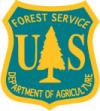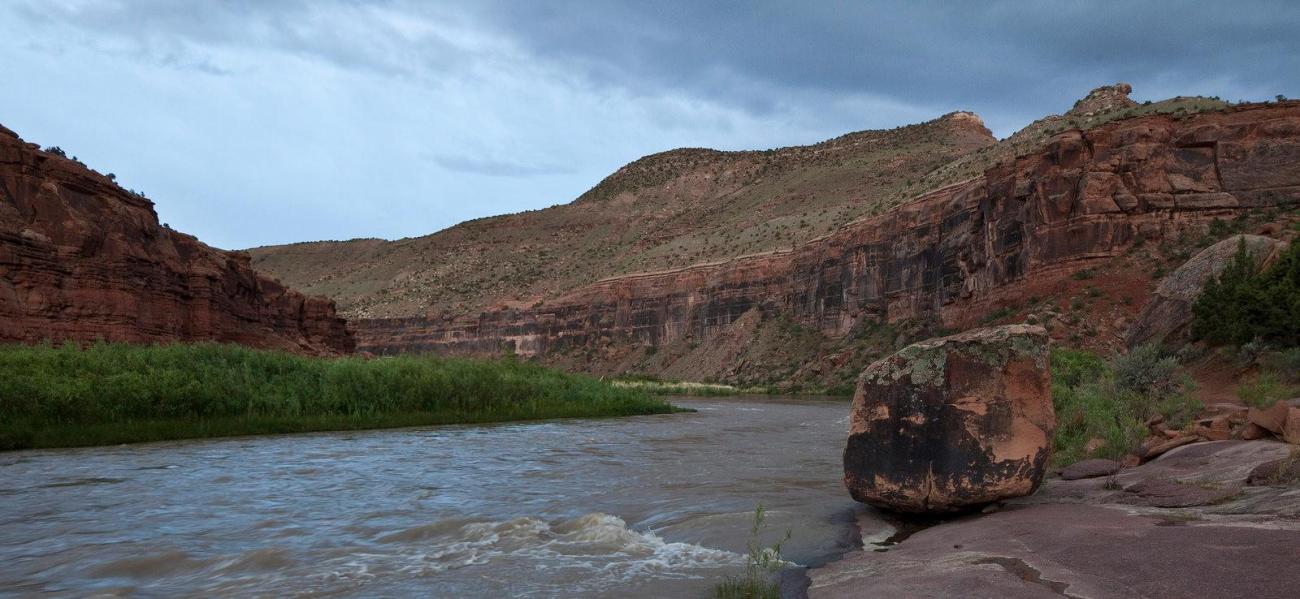 National Park Service
National Park Service: Founded in 1916, the National Park Service is mandated to preserve unimpaired the natural and cultural resources and values of the National Park System for the enjoyment, education, and inspiration of current and future generations. The National Park Service is tasked with protecting the scenic, natural, and historic values across the 419 units of the National Park System, which spans more than 85 million acres. In 2019, the National Park Service welcomed more than 327 million visitors, employed approximately 20,000 people, and managed an annual budget of more than $4 billion.
 Forest Service
Forest Service: Founded in 1905, the Forest Service is the oldest of the four federal land management agencies and currently manages 193 million acres across 154 national forests and 20 national grasslands – roughly 30% of all federal land. The Forest Service is mandated to manage its lands for multiple uses, including recreation and wildlife habitat, and for the sustained yield of renewable resources such as water, wildlife, and timber. The Forest Service is also primarily responsible for wildland fire preparedness and management – working collaboratively with other federal land management agencies, and state and local fire departments. In 2019, the Forest Service employed more than 30,000 people (10,000 as firefighters) and managed an annual budget of roughly $6 billion.
 Bureau of Land Management
Bureau of Land Management: Founded in 1946, the Bureau of Land Management currently administers 245 million surface and 700 million subsurface acres – roughly 40% of all federal land. Similar to the Forest Service, the Bureau of Land Management manages its lands for multiple uses, including recreation, livestock grazing, energy extraction, and wildlife habitat. The Bureau of Land Management also manages the National Conservation Lands, including 28 national monuments, 23 national conservation areas and similarly designated areas, and 260 wilderness areas. In 2019, the agency employed approximately 9,555 people and managed an annual budget of more than $1 billion.
Conservation and Climate Change
- America’s public lands are one of the best resources we have to respond to the climate crisis. These protected places help safeguard biodiversity by protecting important wildlife habitat and enhancing ecological connectivity; safeguard ecosystem services, such as clean air and water; and provide abundant opportunities for scientific research.
- Protected public lands can and should be managed as part of the climate solution – protected federal lands and waters already capture nearly 4% of all U.S. emissions.
- Research suggests that the most resilient ecosystems in the face of climate change are those largely unimpacted by human disturbances, such as wilderness and roadless areas. Wilderness is broadly supported by Americans and, according to the Colorado College State of the Rockies Project's 2020 Conservation in the West Poll, more than 65% of Westerners support prioritizing conservation on public lands over energy production.
- Under Chair Grijalva’s leadership, Committee Democrats have made protecting intact natural landscapes a priority. At the beginning of the 116th Congress, the historic John D. Dingell, Jr. Conservation, Management, and Recreation Act, was passed into law. This popular lands package permanently reauthorized the Land and Water Conservation Fund, designated approximately 1.3 million acres of wilderness, and protected more than 2 million acres of public land from extraction. Since then, the Subcommittee has continued to hold hearings and pass important conservation proposals through the House, including the Colorado Outdoor Recreation and Economy (CORE) Act and the Protecting America's Wilderness Act, which protected more than 1.3 million acres of public land as wilderness and safeguarded 1,000 river miles in Washington, California, and Colorado.
- An analysis by the Center for American Progress found that in the 116th Congress alone, the House of Representatives has supported protections for more than 5.5. million acres – nearly fives times as much as was protected in the previous 8 years combined.
To learn more about the role public land conservation plays in combating the climate crisis, as well as the Committee’s ongoing efforts to address climate change, check out our Medium post on climate solutions here. You can also learn more about the benefits of roadless areas and the Trump administration’s efforts to undermine this critical protection by checking out the Subcommittee’s hearing on the impacts of removing roadless protections here.
Promoting the Recreation Economy
- Protected public lands and waters are critical to the success and continued growth of our country’s multi-billion-dollar recreation economy, especially in rural communities that are historically dependent on boom-and-bust extractive economies. Recreation supports sustainable, clean jobs as more Americans seek out our public lands for opportunities to hike, camp, hunt, fish and spend time outdoors with family and friends.
- The Outdoor Industry Association's (OIA) economic report estimates that outdoor recreation generates $887 billion in direct consumer spending and $124.5 billion in federal, state, and local taxes every year – a contribution larger than the pharmaceutical or automobile industry. The OIA's 2017 report also found that investing in outdoor recreation can reduce crime rates, improve educational outcomes like retention and graduation rates, and reduce stress and obesity rates.
- The Bureau of Economic Analysis has estimated that the U.S. outdoor recreation economy accounted for 2.2 percent ($427.2 billion) of gross domestic product (GDP) in 2017. The growth of the outdoor recreation economy (3.9 percent in 2017) has outpaced the overall U.S. economy (2.4 percent growth). Real gross output, compensation, and employment all grew faster in outdoor recreation than for the economy as a whole.
- Research has shown that rural communities with more protected public lands perform noticeably better than their peers with less protected lands in terms of population, employment, personal income, and per capita income growth.
- Responsible land management practices preserve public lands for future generations and have little to no impact on recreation opportunities. Annual recreation visits to National Parks have increased by more than 120,000,000 visits since 1979, a 60% increase, according the National Park Service's 2019 annual visitation summary report. According to the National Park Service, the national park system also generates $10 of economic activity for every $1 invested.
- To help encourage more access to our public lands, especially for those from historically disadvantaged or low-income communities, the Committee is working to expand environmental justice initiatives and simplify the recreation permitting process for outfitters, guides, and non-profits.
- In the 116th Congress, the House of Representatives passed several Natural Resources Committee bills intended to support outdoor recreation including H.R. 823, the Colorado Recreation Economy (CORE) Act, and H.R. 2546, the Protecting America’s Wilderness Act.
Addressing Wildfire and Community Safety
- Climate change is contributing to higher temperatures, drier conditions, insect and disease outbreaks, and longer fire seasons that, when combined with significant development in fire-prone areas, has increased the likelihood of catastrophic wildfires.
- Wildfires are natural occurrences that help shape healthy and diverse ecosystems but, when extreme wildfire conditions are present, even natural wildfires can burn out of control and place entire communities at risk of devastation.
- Protected public lands, especially large connected landscapes, help delineate areas where wildfire can safely burn away from communities while helping to achieving cost-effective ecosystem and land management objectives.
- A century of unsustainable logging and fire suppression have proven that we cannot cut our way out of wildfire risks. Timber targets are not an appropriate metric for forest health or community protection, with studies showing that less than 1% of wildfires encounter areas where fuels have been reduced. This is why community-focused solutions provide the best defense against devastating wildfires as they promote healthy forests and support rural economies, well-paying jobs, firefighter safety and community resiliency in the face of the climate crisis.
To learn more about land use planning and private-public partnerships can help individuals and communities prepare for wildfire and improve resiliency, check out the Subcommittee’s hearing on Wildfire Resilient Communities here.


 National Park Service
National Park Service Forest Service
Forest Service